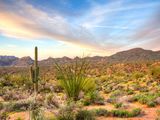Character of a Place Definition Geography
Broadly defined, place is a location. The word is used to describe a specific location, such as the place on a shelf, a physical environment, a building or locality of special significance, or a particular region or location. The term can be used for locations at almost any geographic scale, depending on context. Although location and place are sometimes used interchangeably, geographers assign the terms specific and different meanings.New education standards are now in effect, but in 1984, the National Council of Geographic Education (NCGE) and the Association of American Geographers (AAG) broke the discipline of geography into five major themes, which some continue to use to help teach geography: location, place, human-environment interaction, movement, and region. Location either refers to the actual latitude and longitude coordinates (absolute location) of something on Earth's surface, or it describes something's position in reference to something else (relative location). Place, on the other hand, refers to the physical and human characteristics of a spot on the map. In other words, location focuses on where; place focuses on what it is like there. Place also includes descriptions of a site's features and environmental conditions. The physical and human characteristics of a place make it unique. Physical characteristics include the natural environment, such as landforms, elevation, water features, climate, soil, natural vegetation, and animal life. Human characteristics include the size and density of the population, the ethnic and religious makeup of the population, language patterns, and other aspects of the culture. Human characteristics also include the built environment, such as houses, roads, and other infrastructure. The study of a place often focuses on creating a better understanding of how the physical and human aspects of a location interrelate and interact. Geographers can also use place to compare and contrast different locations. Geographers can compare the physical and human characteristics of the Sahara and Antarctica, for instance, to better grasp the characteristics of each place, how the natural and human worlds interact, and how places vary across the world. In the case of the Sahara and Antarctica, they are both intense deserts, but one (the Sahara) is hot while the other (Antarctica) is cold. Although both are harsh, sparsely populated environments, nomadic groups have called the Sahara home for thousands of years, but it is only in recent times that people, mainly researchers, have started exploring and living in Antarctica.

The Sonoran desert in the southwestern United States and northwestern Mexico, is one of the most unique and diverse places on the planet. Many plants and animals are only found in this massive desert that stretches over 260,000 square kilometers (100,000 square miles).
Photograph by Tonda
absolute location
Noun
exact spot where something is located, usually its latitude and longitude.
built environment
Noun
man-made or constructed parts of a landscape or area.
ethnic
Adjective
having to do with characteristics of a group of people linked by shared culture, language, national origin, or other marker.
Noun
study of places and the relationships between people and their environments.
Noun
distance north or south of the Equator, measured in degrees.
Noun
position of a particular point on the surface of the Earth.
Noun
distance east or west of the prime meridian, measured in degrees.
Noun
area having unique physical and human characteristics.
Noun
the number of people living in a set area, such as a square mile.
Noun
any area on Earth with one or more common characteristics. Regions are the basic units of geography.
relative location
Noun
general spot where something is located; its place in relation to something else.
scale
Noun
distinctive relative size, extent, or degree.
site
Noun
specific place where something is located.
situation
Noun
location of something in relation to another thing.
Character of a Place Definition Geography
Source: https://www.nationalgeographic.org/encyclopedia/place/
0 Response to "Character of a Place Definition Geography"
Post a Comment